Table of Contents[Hide][Show]
Carbs, carbs, carbs. No doubt since you got a diagnosis of type 2 diabetes or prediabetes, you’ve seen the topic of carbohydrates mentioned a lot of times. But the thing is, you’re not a nutritionist, you eat food and so you may have wondered, what is a carbohydrate? That’s what this episode and post explores.
LISTEN TO THE PODCAST
CHAPTERS
1:49 3 macronutrients
3:03 The fascinating journey of the carbs we eat
7:08 What is a carbohydrate?
9:01 Simple carbohydrates
10:21 Complex carbohydrates
11:39 5 carb categories explained with examples
19:19 3 carb questions
21:16 Sugar or carbs on food labels?
Support the podcast by leaving a 5-star rating and review on Apple, Spotify or our Website – Thank You!
Understanding Carbohydrates: A Simple Guide for People with Type 2 Diabetes and Prediabetes
Whether you’re living with type 2 diabetes or prediabetes, understanding carbohydrates can empower you to make informed choices and improve your health.
Why Are Carbohydrates Important?
Carbohydrates are one of the three main macronutrients in our diet, alongside protein and fat – listen to Episode 20 for more on macronutrients.
Understanding carbohydrates is especially important for people with diabetes because carbohydrates have the most significant impact on blood sugar levels.
When you consume carbohydrates, your body breaks them down into glucose, which then enters your bloodstream and affects your blood sugar levels. And they influence blood sugar more than any other nutrient.
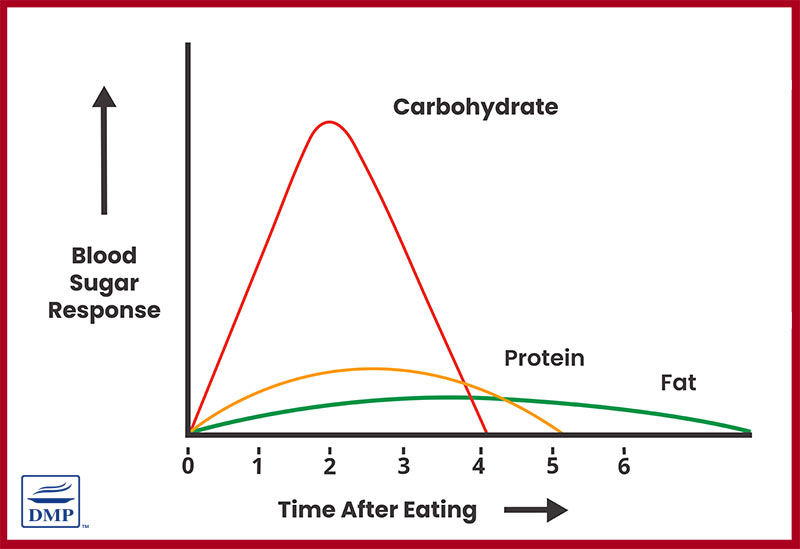
The Journey of Carbohydrates in Your Body
Let’s take a closer look at what happens when you eat carbohydrate-rich foods:
1. Mouth: The digestive process begins in the mouth. Chewing breaks down the food, and an enzyme called amylase in your saliva starts breaking down carbohydrates into simpler sugars.
2. Stomach: The food travels down the esophagus and into the stomach. Stomach acids further break down the food, but carbohydrates remain relatively unchanged at this stage.
3. Small Intestine: In the small intestine, enzymes from the pancreas and the intestinal lining break down carbohydrates into simple sugars, primarily glucose (sugar).
4. Bloodstream: Glucose (sugar) is absorbed into the bloodstream through the walls of the small intestine. It then travels to cells throughout your body.
Insulin, a hormone produced by the pancreas, helps cells absorb glucose from the bloodstream for energy. However, with type 2 diabetes or prediabetes, this process can be impaired, leading to higher levels of glucose in the blood.
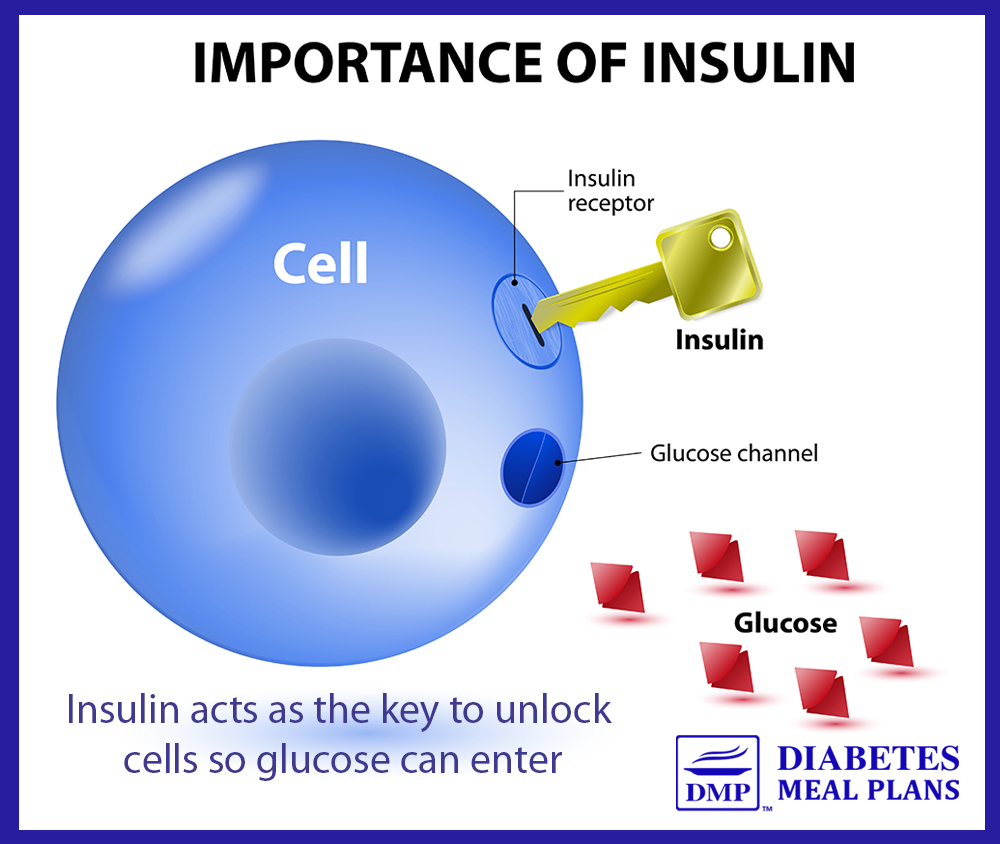
Types of Carbohydrates
Carbohydrates are commonly categorized two broad categories, simple and complex carbs:
Simple Carbohydrates
These are composed of one or two sugar molecules. They are digested and absorbed quickly, causing a rapid spike in blood sugar levels. Common sources include sugary foods and drinks, processed foods, and some natural sources like fruit.
Read more on simple carbs here.
Complex Carbohydrates
These consist of longer chains of sugar molecules and take more time to break down and digest. This slower digestion leads to a more steady release of glucose into the bloodstream. Common sources include whole grains, vegetables, and legumes.
Read more on complex carbs here.
Five Carb Categories
Dr. Jedha prefers to put carbs into 5 categories, as it’s a bit easier to understand:
- Sugars
- Starches
- Beans and legumes
- Fruits
- And Vegetables
Sugars: essentially, the simple carbs like candy, soda, and syrups and many processed foods. Try your best to eliminate sugars.
Starches: grains like rice, oats, bran, quinoa, barley, and wheat products (pastas and noodles); and starchy vegetables (potatoes, sweet potatoes and corn). Try your best to avoid or minimize starches.
Beans and legumes: provide high levels of fiber, making them a slow carb. Eat in moderated portions of approximately a quarter cup per serve.
Fruits: provide some vitamins, minerals, and fiber but fruit intake needs to be carefully monitored and portioned so as not to eat too much.
Vegetables: Focus all your attention on eating vegetables as your main source of carbohydrate and consume in abundance.
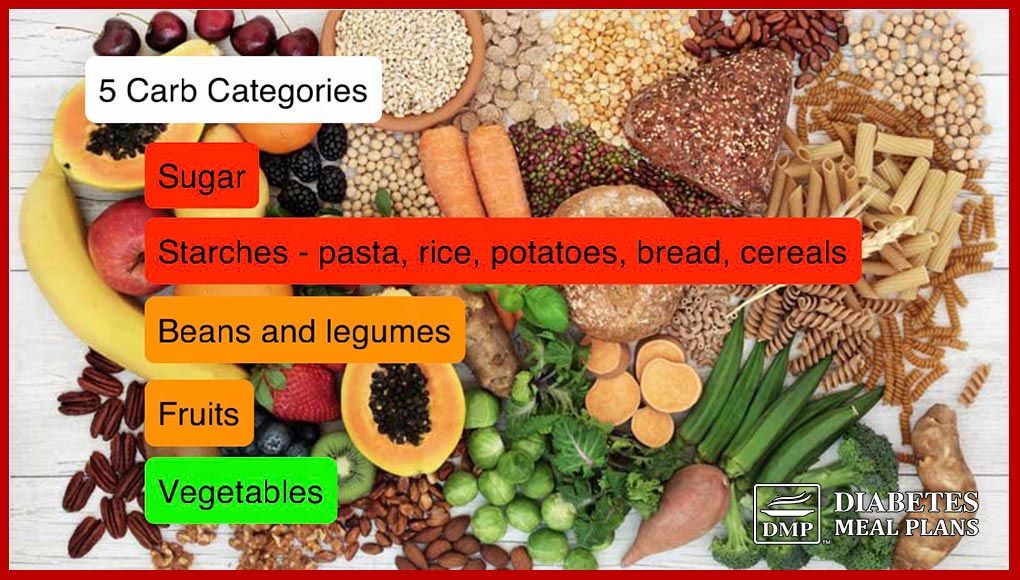
Carbohydrate Examples and Comparisons
Understanding the carbohydrate content of various foods can help you make better choices to manage your blood sugar levels.
Here are some examples and comparisons:
Sugars:
- White, raw, or brown sugar: All contain around 4 grams of carbohydrates per teaspoon.
- Honey and maple syrup: Approximately 6 grams of carbohydrates per teaspoon. A more realistic serving size, like one tablespoon of honey, contains around 17 grams of carbs.
Starches:
- Pasta: Half a cup serving contains about 20 grams of carbs, but typical servings are larger, often around 1.5 cups, equating to 60 grams of carbs.
- Flour: A quarter cup contains around 20 grams of carbs. Many processed foods made with flour and sugar can quickly add up in carbohydrate content.
- Ritz crackers: Five small crackers contain 10 grams of carbs with little to no fiber or nutritional value.
- Chips Ahoy choc chip cookies: Three small cookies contain 22 grams of carbs, highlighting how easy it is to consume high amounts of carbohydrates from processed snacks.
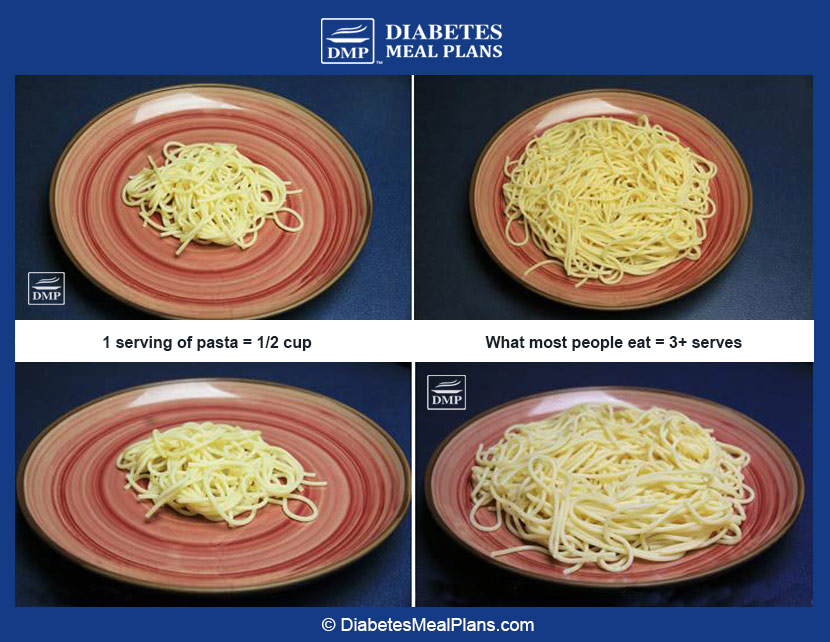
Beans and Legumes:
- Baked beans: A quarter cup serving contains around 15 grams of carbohydrates.
Fruits:
- Bananas: A small banana has around 20 grams of carbohydrates.
- Mangoes: Can contain 45-50 grams of carbs per serving.
- Apricots: About 4 grams of carbs per apricot.
- Strawberries: Half a cup contains around 4-5 grams of carbs, demonstrating the wide variance in carbohydrate content among fruits.
Vegetables:
- Non-starchy vegetables: Generally low in carbohydrates and rich in vitamins, minerals, fiber, and beneficial compounds. For example, cauliflower is a cruciferous vegetable that provides around 3 grams carbs per one cup serve, along with fiber, antioxidant vitamins, and other compounds that support overall health and stable blood sugar levels.
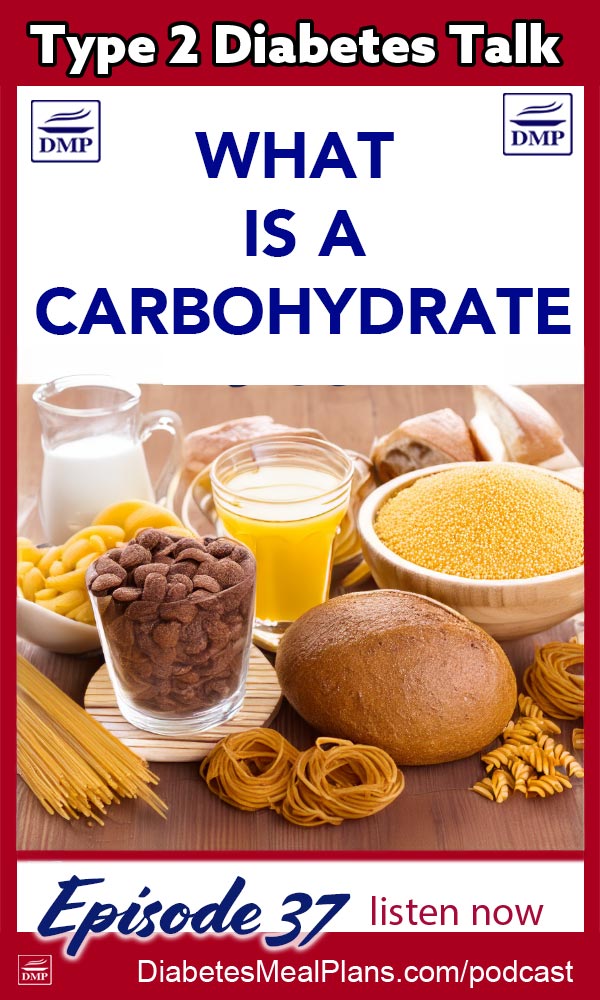
Carbohydrates Questions
1. Is glucose a carbohydrate?
Yes, glucose is a carbohydrate. It is a simple sugar and one of the most basic forms of carbohydrates. All forms of carbs are broken down to glucose during digestion.
2. Is starch a carbohydrate?
Yes, starch is a carbohydrate. It is a complex carbohydrate made up of long chains of glucose molecules. Starchy foods include potatoes, corn, and grains.
3. Is sugar a carbohydrate?
Yes, sugar is a carbohydrate. Sugars are simple carbohydrates composed of one or two sugar molecules, such as glucose, fructose, and sucrose. Table sugar, for example, is a carbohydrate made up of 50% glucose and 50% fructose.
4. Should I read sugar or carbs on food labels?
When reading food labels, don’t just focus on the sugar content. Look at the total carbohydrates to get a complete picture of how the food will impact your blood sugar.
For example, a serving of choc chip cookies might list 10 grams of sugar but have a total of 22 grams of carbohydrates, which will all influence your blood sugar levels.
Conclusion
Understanding carbohydrates and their effects on your body is crucial for achieving and maintaining healthy blood sugar levels with type 2 diabetes and prediabetes.
By monitoring your carbohydrate intake, choosing whole foods, limiting processed foods, and focusing on vegetables, you can maintain stable blood sugar levels and improve your overall health.
To get started, grab our free carb cheat sheet below. For more detailed guides and resources, consider joining our membership program where you can access a wealth of information and ongoing support.
Transcript
Click Here To View
Hello, thanks for joining me today for episode 37.
Carbs, carbs, carbs. No doubt since you got a diagnosis of type 2 diabetes or prediabetes, you’ve seen the topic of carbohydrates mentioned a lot of times. And since they are mentioned a lot you know they must be important in some way, but the thing is, you’re not a nutritionist, you eat food and so you may have wondered, what is a carbohydrate? That’s the question we’re answering today, along with why they are important when you are living with diabetes, and also answering a few questions like, is glucose a carbohydrate? Is sugar a carbohydrate? Is starch a carbohydrate? And should I be looking at the sugar or carb content of food labels? All great questions.
So let’s start at the beginning. Why do you see carbs, carbs, carbs everywhere and why is it so important to understand carbs? Let’s break it down.
We have three macronutrients in our diet – carbohydrates, protein and fat. We covered these back in episode 20, so please do head back and listen for an overview on all three. First and foremost, the most important thing to understand is that carbohydrates directly affect your blood sugar levels. More than any other nutrient, carbohydrates influence your blood sugar levels the most.
Before we dig in, let me just explain that when we talk about blood sugar we sometimes say blood glucose. Blood sugar and blood glucose mean the same thing, glucose and sugar are just alternative words for the same thing. Okay, now that we understand that, let’s look closer at carbs and as I said, carbohydrates influence your blood sugar levels more than any other nutrient.
Okay, so let’s take a little adventure.
It’s interesting, we eat food and once that food goes in our mouth, we rarely, if ever, think about what happens to it after that. So, let’s take a moment to consider the fascinating journey of the carbohydrate foods we eat.
When we eat carbohydrates, the digestive process begins in the mouth. Chewing breaks down the food into smaller pieces, and an enzyme called amylase, found in saliva, starts to break down the carbohydrates into simpler sugars. As we swallow, the food travels down the esophagus and into the stomach. Here, the stomach acids continue to break down the food, although carbohydrates remain relatively unchanged at this stage. The real action happens once the food reaches the small intestine.
In the small intestine, enzymes from the pancreas, including more amylase, and enzymes produced by the lining of the small intestine, such as maltase, sucrase, and lactase, break down the carbohydrates into simple sugars. These simple sugars are primarily glucose, but also include fructose and galactose. Glucose is a primary source of energy for the body. Once the carbohydrates are broken down into glucose, it is absorbed into the bloodstream through the walls of the small intestine. As glucose enters the bloodstream, it travels to cells throughout the body.
One thing to note here is that all the carbohydrate foods you eat, all get broken down to simple sugars. Keep that in mind as we’ll come back to this later.
So, you’ve eaten the carbohydrate foods, they’ve traveled through your system, they’ve been broken down to glucose or other simple sugars and now the glucose is in the bloodstream traveling to the cells in your body.
Insulin, a hormone produced by the pancreas, plays a key role here. Insulin helps cells absorb glucose from the bloodstream so it can be used for energy. With type 2 diabetes and prediabetes, this process is often impaired, most commonly because cells throughout the body are resistant to insulin’s effects, and sometimes it can be because the body doesn’t produce enough insulin. If insulin is not effective, this leads to higher levels of glucose in the blood.
So essentially, all that glucose in your bloodstream has nowhere to go, it can’t get into the cells so high levels of glucose circulate in the blood.
Remember what we established earlier, that first and foremost, the most important thing to understand is that carbohydrates directly affect your blood sugar levels – and we’ve just been through the fascinating journey from mouth to gut to bloodstream to understand how this happens. We also established earlier that more than any other nutrient, carbohydrates influence your blood sugar levels the most.
So essentially when we eat carbohydrates, and that is any type of carbohydrate foods, the body breaks them down into simple sugars, primarily glucose, which enters the bloodstream, raising blood sugar levels.
With diabetes or prediabetes, controlling blood sugar levels and keeping them in a healthy range is vital to your health, to prevent complications and maintain energy levels. By understanding how different carbohydrates impact your blood sugar, you can make more informed food choices to keep your levels within a healthy range. Like all foods, not all carbohydrates are created equal, some are much better for our health than others.
So, coming back to what is a carbohydrate. As we established, carbohydrates are one of the three main macronutrients found in food, along with proteins and fats. And carbohydrates influence your blood sugar levels more than any other nutrient. That doesn’t make carbohydrates bad. Not at all. And you certainly don’t need to exclude all carbohydrates. You don’t need a no carb diet. A crazy keto diet or carnivore diet or any other crazy daisy diet fad. Carbohydrates aren’t bad. Carbs are not the enemy.
But of course, carbohydrates do impact blood sugar the most, so it is important to understand all the different types of carbohydrates and that’s where it can get a bit confusing and a bit tricky, because lots of different types of foods are carbohydrates.
You might have heard of simple and complex carbs, which are two broad categories of carbohydrate foods that we commonly hear about.
What it comes down to with these foods is the molecules that make them up. Simple carbohydrates are composed of one or two sugar molecules, while complex carbs are composed of longer chains of sugar molecules.
Since simple carbohydrates are composed of one or two sugar molecules, it makes sense that these are easy for the body to digest and absorb quickly, right? Because remember that the body breaks down all carbohydrates into glucose, so if a carbohydrate is already only one or two sugar molecules, there’s no breaking down. So simple sugars digest and absorb quickly.
Common sources of simple carbs include:
- Sugary foods and drinks: Think sugar (raw, white or brown), and foods that contain sugar like candy, soda, and syrups.
- Processed foods: Many processed and packaged foods are high in added sugars.
- Natural food sources can also be simple sugars, such as fruit for example, but the benefit of fruit as opposed to sugary foods and drinks, is that fruit provides some vitamins, minerals, and fiber. But fruit is still a sugar or simple carb so keep that in mind.
Complex carbohydrates, because they are made up of longer chains of sugar molecules, take more time for the body to break down and digest. This slower digestion process means that complex carbs may lead to a more steady release of glucose into the bloodstream. But there is one very important thing to keep in mind here: all the carbohydrate foods you eat, all get broken down to simple sugars, to glucose. Let’s just repeat that: all the carbohydrate foods you eat, regardless if they are simple and complex carbs, regardless of the type of carbohydrate, all carbohydrates get broken down to glucose.
That said, complex carbohydrates are healthier options, because they are generally more nutrient dense compared to simple carbs.
Common sources of complex carbs include:
Whole grains: Foods such as brown rice, oats, bran, quinoa, barley, and whole wheat products.
Vegetables: All types of vegetables are complex carbohydrates.
Legumes: Beans, lentils, and chickpeas etc are sources of complex carbohydrates.
The concept of simple and complex carbs are two broad and common categories but I think it’s easier to understand carbs by putting them into 5 different categories:
- Sugars
- Starches
- Beans and legumes
- Fruits
- And Vegetables
Sugars are all those things we covered, essentially, the simple carbs like candy, soda, and syrups and many processed foods. Try your best to eliminate as many sugars as possible from your eating plan.
Starches are complex carbs and when we talk about starches we are mainly talking about grains like rice, oats, bran, quinoa, barley, and wheat products, so things like pastas and noodles, these are starches. Some vegetables are also starches, including potatoes, sweet potatoes and corn. Try your best to avoid or minimize starches as much as possible as these are very high carbohydrate foods.
Beans and legumes are a starch and a complex carb but they are in their own category as they provide high levels of fiber, making them a slow carb. They have some good research to support benefits in terms of blood sugar and supporting gut bacteria. But with these you need to watch portion sizes as many beans and legumes have significant amounts of carbs.
Fruits, as we already established, are a simple carbohydrate but they do provide some vitamins, minerals, and fiber. But since they can be high in overall carbohydrates, fruit intake needs to be carefully monitored and portioned so as not to eat too much.
Vegetables are a complex carbohydrate and they are the very best type of carbohydrates you can eat for better blood sugar control. Focus all your attention on eating vegetables as your main source of carbohydrate, and you’ll notice improvements in your blood sugar levels and your overall health.
So let’s just go over some carbohydrate food examples and comparisons in these five categories, so you can get your head around this stuff.
Sugars – whether its white sugar, raw sugar or brown sugar these all have around 4 grams carbs per teaspoon. For natural sugars like honey and maple syrup it’s around 6 grams per teaspoon. It’s pretty rare that people eat only a teaspoon of honey, so a more realistic serving is one tablespoon and that’s around 17 grams of carbs – which is a lot. Lots and lots of processed and packaged foods contain added sugar, and as you might imagine, it soon adds up to quite a lot if we’re not aware of it.
Starches – let’s look at pasta, a serving of half a cup is around 20 grams of carbs, but most people won’t eat a small bowl of just half a cup, they’ll eat at least 3 serves, 1.5 cups, which amounts to around 60 grams carbs – that’s a lot of carbs for one meal. Flour is a starch and a 1/4 cup flour is around 20 grams of carbs, that’s quite a lot. Think about how many food products on the shelf that are made with a combination of flour and sugar – thousands of them. Let’s use Ritz crackers as one example, made with wheat flour, oil, sugar, salt, and high fructose corn syrup. Just 5 small crackers is 10 grams of carbs and zero fiber or quality nutrition.
For sweeter foods like cookies, let’s say Chips Ahoy choc chip cookies as an example, 3 small cookies will be 22 grams of carbohydrates and zero fiber or quality nutrition. Think about how easy it is to eat packaged foods, without even thinking about what’s in them and the amount of carbohydrates. But keep in mind as we adventured earlier, that once foods pass our lips they do go inside our bodies to fuel our system. All of those carbohydrate foods get broken down during digestion and have an influence on our blood sugar levels. There are lots of processed and packaged foods available to us, but unfortunately, many of them are low quality foods that are high in carbohydrates. And it can be very easy to load carbs on top of carbs on top of carbs.
Beans and legumes. Let’s use baked beans as an example, 1/4 cup will be around 15 grams and generally that’s what we recommend with beans and legumes, sticking to 1/4 cup per serve.
Fruits can vary widely. Bananas are a popular fruit but they are pretty hefty in terms of carbs, around 20 grams per small banana. Mangoes are huge for carbs around 45-50 grams. But if we choose an apricot we’re looking at around 4 grams carbs instead, or half a cup of strawberries about 4-5 grams – that’s a big difference, right?
As for vegetables, focus all your attention on eating vegetables as your main source of carbohydrate. Except for those starchy ones mentioned earlier such as potato, sweet potato and corn, most vegetables are naturally low in carbohydrates and full of vitamins, minerals, fiber and other beneficial nutritional factors like polyphenols, flavonoids and compounds that nourish our cells, boost metabolism and support stable blood sugar levels. Take cauliflower as one example. It contains around 3 grams carbs per cup. It comes from the family of cruciferous vegetables and cruciferous vegetables contain fiber, antioxidant vitamins (vitamin C and β-carotene), antioxidant minerals (selenium), phenolic compounds, and sulfur compounds called GLS. These powerful compounds can help decrease oxidative stress and cellular inflammation and improve insulin resistance. And that’s just the benefits of one vegetable so when we start adding variety, all those beneficial compounds fuel our cells and metabolism, dramatically boosting our health.
Although I think we’ve already covered the answers, let’s cover a few questions now:
Is glucose a carbohydrate?
Yes, glucose is a carbohydrate. It is a simple sugar and one of the most basic forms of carbohydrates. And as we established earlier, during digestion all forms of carbs are broken down during digestion, primarily to glucose.
Is starch a carbohydrate?
Yes, starch is a carbohydrate. It is a complex carbohydrate made up of long chains of glucose molecules. As we established, starchy carbohydrate foods include potatoes, corn, and grains. We also established that starches are best to avoid or minimize.
Is sugar a carbohydrate?
Yes, sugar is a carbohydrate. Sugars are simple carbohydrates composed of one or two sugar molecules, such as glucose, fructose, and sucrose. For example, table sugar is a simple carbohydrate made up of 50% glucose and 50% fructose.
And one more important question that frequently comes up:
Mark said: I’ve always just looked at the sugar on food labels so should I be taking note of only sugar on food labels or carbohydrates too?
Great question Mark and it’s one that many people get confused over. After all, we think it’s only the sugar that’s going to influence blood sugar, but as we’ve established here today, all carbohydrates influence blood sugar levels, so it’s important to look at the carbohydrates on food labels, not just the sugar. On food labels, sugar is listed as a part of carbohydrates, a subcategory. Let’s use those choc chip cookies as an example here again. If I was only looking at the sugar, the label would tell me it’s 10 grams per serve, but eating 3 small cookies is really 22 grams of carbohydrates per serve. If I were to account only for the sugar, I’d miss the extra 12 grams all of which will influence my blood sugar levels. Don’t just focus on the amount of sugar!
Alrighty then, I hope you’ve enjoyed delving into the question: what is a carbohydrate? And I hope you feel a bit more enlightened upon the answer to that question too. Knowledge is power. When you understand carbohydrates and their effects on your body, you gain confidence in knowing how to stabilize your blood sugar levels, naturally, and that’s exactly what we help our members do, become a super carb savvy pro!
Honestly, as a member, we do help make all this diet and nutrition stuff easy, so you don’t have to waste time trowelling the wild west web but instead you can focus on living life to the fullest, knowing you’ve got trusted information and support at your fingertips all year round.
If you haven’t already, please do go check out our memberships and I hope to see you inside with the DMP Family!
Morning blood sugar levels, also known as fasting blood sugar, are the glucose levels in your blood when you first wake up, before eating or drinking anything. And it turns out many people are quite puzzled by those morning numbers. If that’s the case for you, you’ll love next week’s episode which is all about morning blood sugar levels.
Until next week, take care.
Dr Jedha, over and out.
© DiabetesMealPlans.com
Subscribe to Type 2 Diabetes Talk on: Apple | Spotify | Amazon Music | Audible | YouTube | Podcast Index | Player FM | and more…

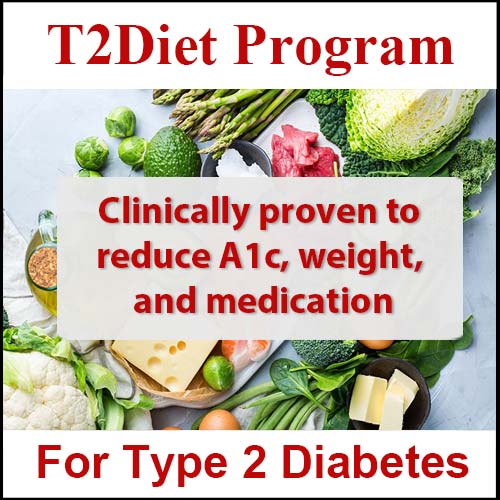
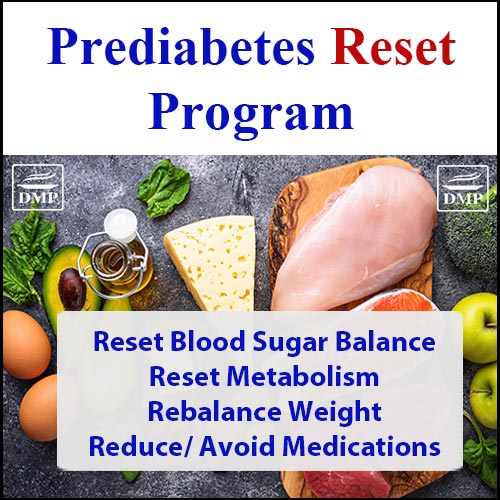
Leave a Reply